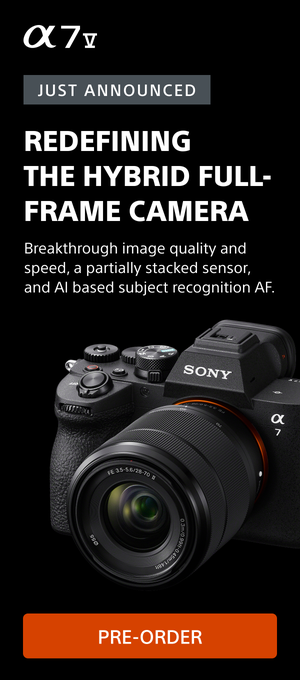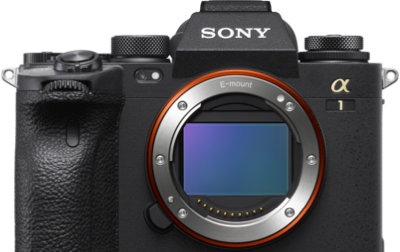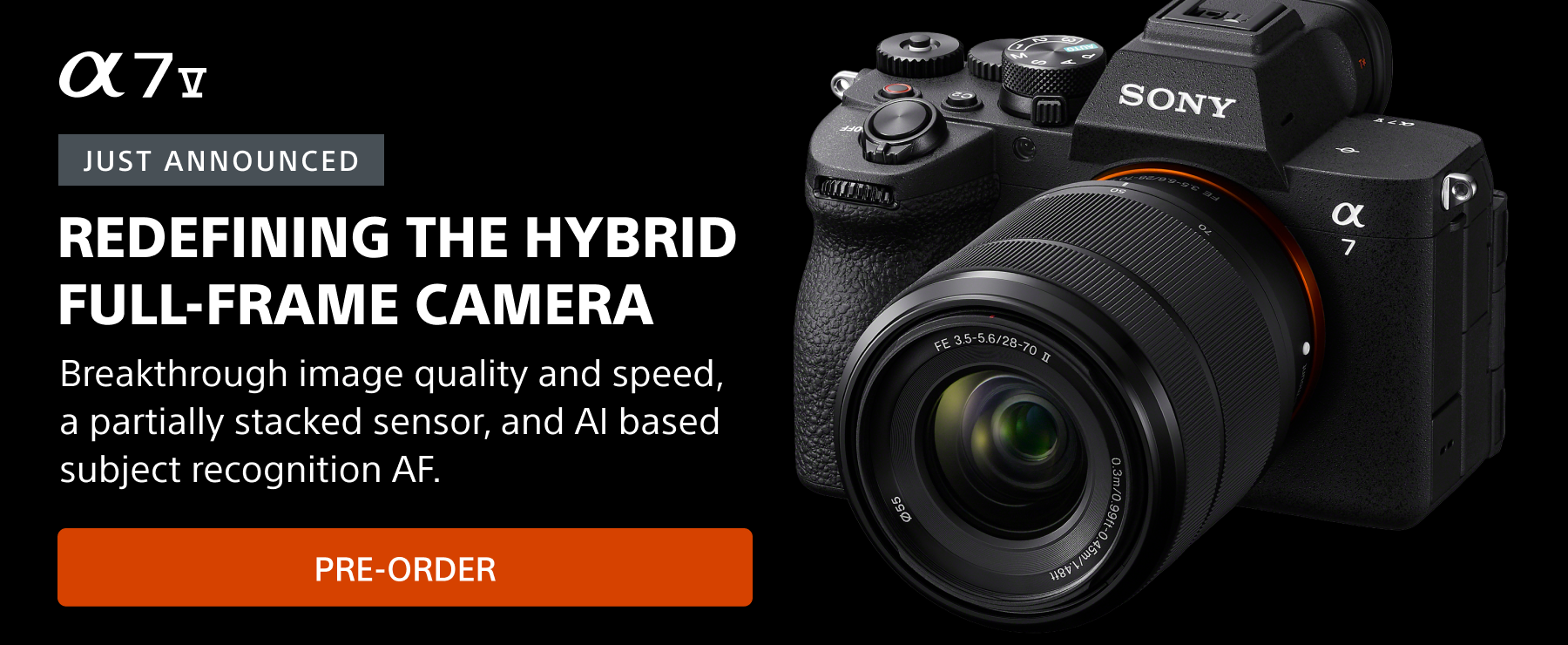Brandon Kirk is Los Angeles-based professional photographer specializing in surf and beach landscapes. “As a surfer, the ocean and beaches are constant sources of inspiration – the beauty of huge winter swells, endless beach-scapes, and glorious sunrises and sunsets,” he says. “In the winters, I migrate to the North Shore of Oahu like many of the world’s best surfers. The stretch of coastline from Haleiwa to Sunset Beach is known as the Seven Mile Miracle because of the size, quality and consistency of the surf. And there’s no place I’d rather be practicing my craft.” We recently came across this scroll-stopping sunset image he captured with his Sony Alpha 7R V and Sony 200-600mm f/5.6-6.3 G and had to learn more. Keep reading as he shares the story behind an image that was two years in the making.
Product Preview – In This Article You'll Find:
–Sony Alpha 7R V
–Sony 200-600mm f/5.6-6.3 G
–Sony 1.4x Teleconverter
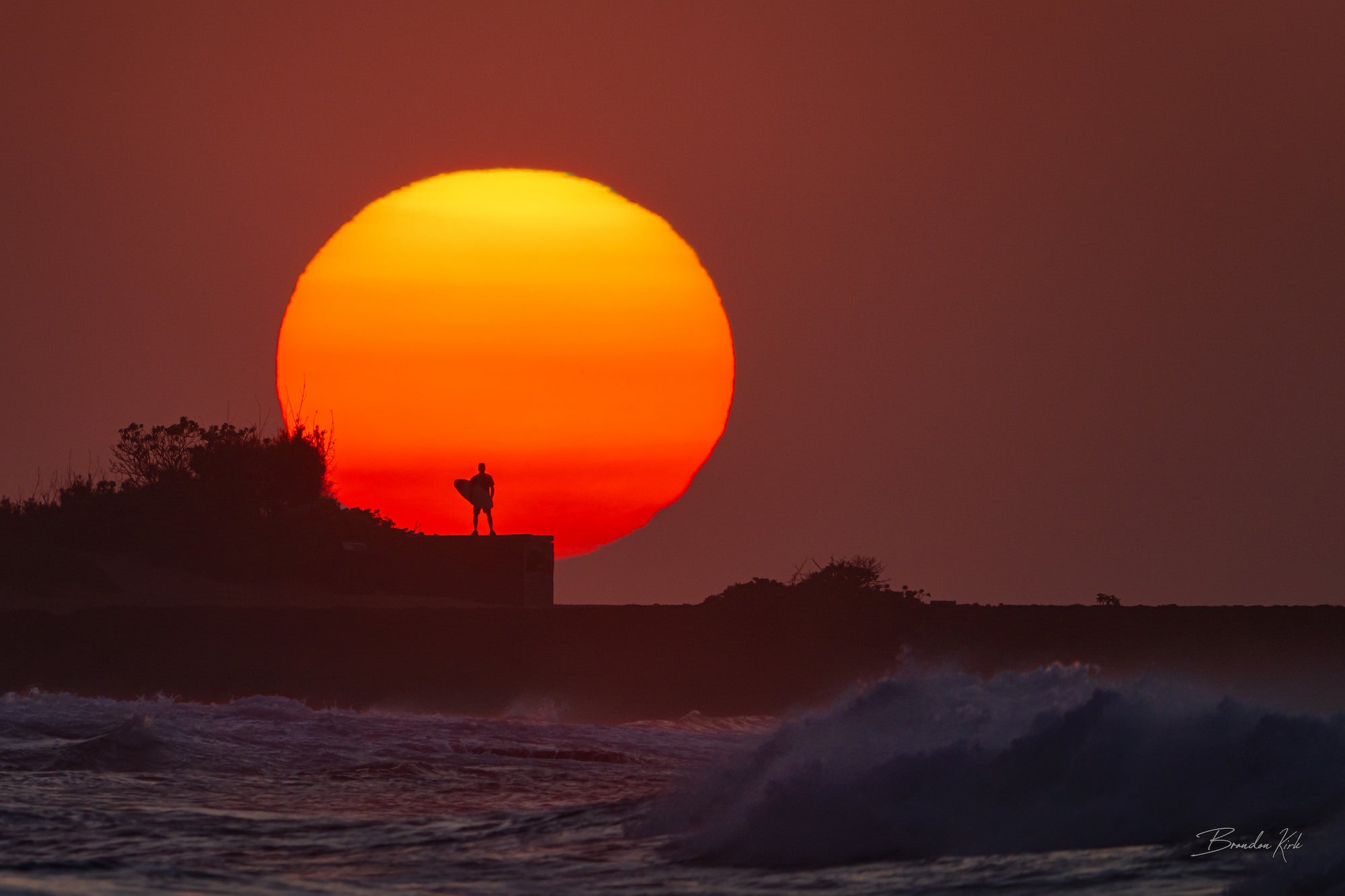
Photo by Brandon Kirk. Sony Alpha 7R V. Sony 200-600mm f/5.6-6.3 G + 1.4x TC. 1/640-sec., f/9, ISO 200
A Photo Two Years In The Making
It took me two years to get this shot.
I first conceived the idea for this image in February of 2023. I was on the North Shore walking along the coastline with my wife at sunset. I noticed a couple guys fishing from a lava rock point in the distance just as the sun began to drop, silhouetting them beautifully against the warm colors of the sunset.
As a surf photographer, I immediately knew that I needed to recreate this same scene but with a surfer holding a surfboard. I consulted my trusty sunset app, The Photographer’s Ephemeris, and determined that there’s only a few weeks each year that shots like this are possible along the North Shore.
Unfortunately, as the winter solstice approaches, the sun, when viewed from the beaches along the North Shore, sets behind a low range of mountains on the westernmost tip of Oahu, not into the ocean. Though I tried for the next three weeks, the weather never cooperated. I needed the evening sky and the western horizon to be clear, but it was a typical rainy winter on the North Shore. About a week later, the sun set angle had moved too far offshore to make it happen.
I returned to the North Shore in the winter of 2024 determined to get the shot. But once again, it was not to be. I was met with overcast skies and cloudy horizons every evening during my time on Oahu. Finally, this winter with several days of clear skies in the forecast and after a lot of careful planning and reconnaissance, this image came together. I spent many hours of homework and legwork to figure out: 1) the exact location of the sunset on the horizon; 2) where to position myself; and 3) where and how to position my subject precisely between me and the setting sun.
If you’re wondering how I knew the setting sun was going to turn into those amazing colors, transitioning from yellow to deep red, the truth is that I didn’t know. The previous nights, although clear, had been a more traditional golden sunset. But on this night, the sky was very hazy to the point that I worried if I’d even see the sun set. As it turns out, the hazy skies supplied the magic that I needed. As landscape photographers say, it was a ‘serendipitous' moment. Yes, even with a lot of visualization and meticulous planning, there’s always a bit of luck that elevates a good photo to a great image.
A Critical Camera & Lens Combination
To capture this image, I used the Sony Alpha 7R V and the Sony 200-600mm f/5.6-6.3 G lens with the Sony 1.4x Teleconverter. I had the lens at 600mm, so when combined with the 1.4x teleconverter, it was the equivalent of an 840mm lens.
This combination was critical to make the sun appear as large as possible. I had done some preliminary shooting at 600mm without the 1.4x teleconverter and the size of the sun was underwhelming. Of course adding the teleconverter meant losing an f stop, so my minimum aperture went from f/6.3 to f/9. Not a big deal in the middle of the day with bright sunlight, but in the fleeting light at the end of the day, f/9 meant I’d be losing a lot of precious light.
I had to make some quick adjustments on the fly. I bumped the ISO from 100 to 200 to give me a bit more light. And, rather than shoot at 1/1000-sec. as I would have preferred to do, I slowed the shutter down to 1/640-sec. On a tripod, 1/640-sec. should have been no problem even with an 840mm lens equivalent, but I had some other challenges.
To elevate the surfer relative to my position, I was shooting at the water’s edge and close to water level. I couldn’t back up because I was pinned against the rocky wall behind me. The waves were splashing on the feet of my tripod and over my ankles. And the tide was rising.
At 840mm, the sun moves fast, really fast. And, when it sets, it doesn’t drop straight down, it sets on a diagonal line. Just as the moment of alignment was nearing, I realized I had to move to my right and do it quickly.
There would only be several seconds where my subject, big wave surfer Anthony Teitelbaum, would be in the optimal position – completely encircled within the setting sun. With no time to spare, I quickly picked up my tripod and moved about 20 feet to my right to put the surfer exactly where I wanted him in my frame.

Photo by Brandon Kirk. Sony Alpha 7R V. Sony 200-600mm f/5.6-6.3 G + 1.4x TC. 1/640-sec., f/9, ISO 200
But as I splayed the legs of my tripod in this new location, the rocky shoreline on which it sat was nothing like the rocky shoreline I had just moved it from. Time had run out. I couldn’t adjust my tripod and fine tune the position of my gimbal. And even if I could, the waves continued to splash at my feet so there was no guarantee of a stable, motionless tripod.
Looking down at my crooked, unbalanced tripod legs, I desperately loosened the levers on the gimbal, quickly turned on stabilization for the lens and basically used the tripod like a monopod, hoping, no praying, that Sony’s stabilization technology would give me a sharp image. Thankfully, it did.
The Edit
My photo editor, Bruce Davis, does all of my post-processing. He made the initial edits in Photoshop Camera RAW to crop, adjust tone levels, color and vibrance. In Photoshop, he cloned out some minor distractions and added a slight vignette to the sky. Though there was minimal noise at ISO 200, he used Topaz DeNoise for noise reduction.
See more of Brandon Kirk’s work on Instagram @brandonkirk and at brandonkirk.com.
